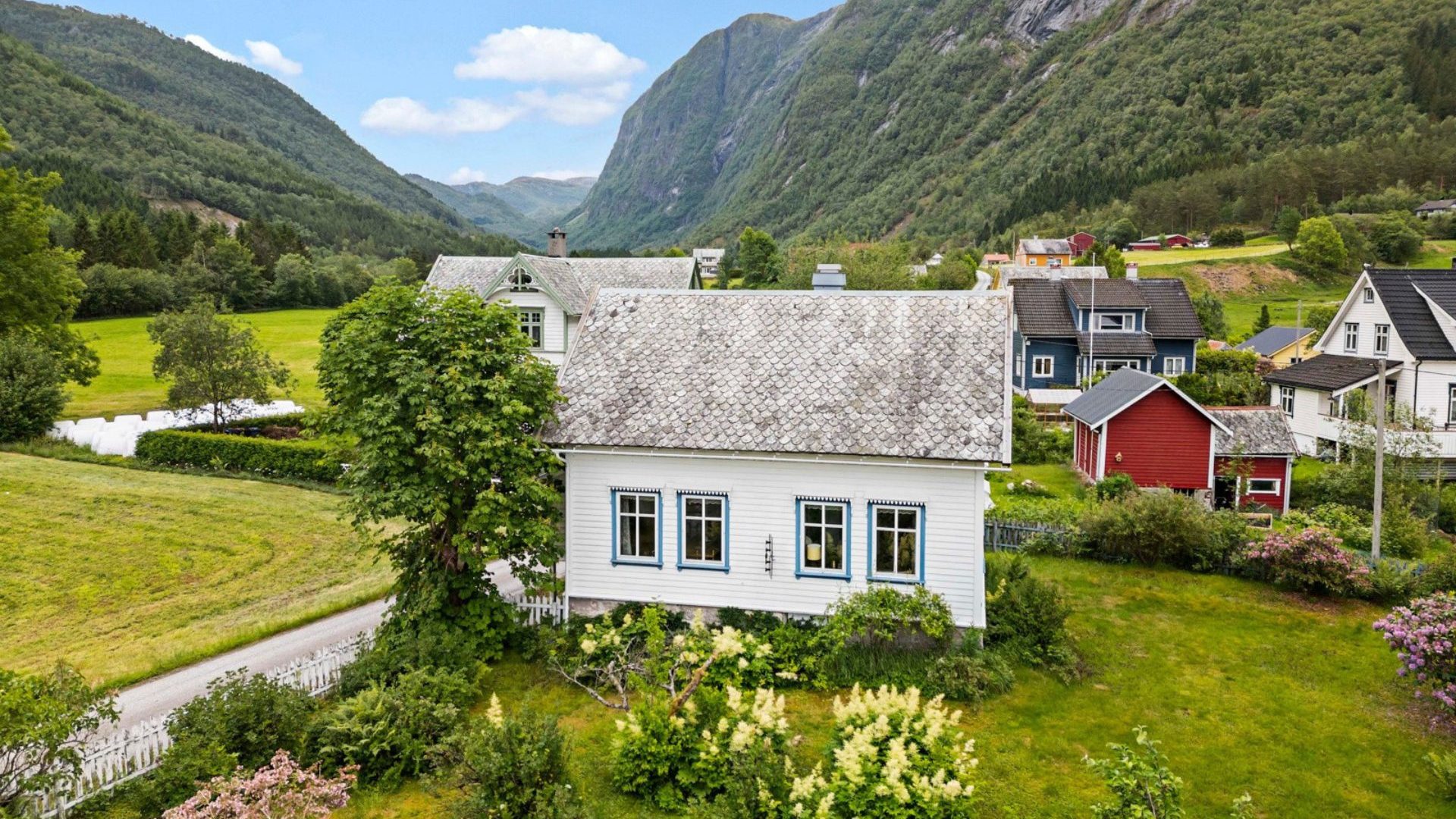
Scandinavia has a reputation for being one of the most expensive places on Earth. So why are there so many houses for sale for less than USD$100,000?


Scandinavia has a reputation for being one of the most expensive places on Earth. So why are there so many houses for sale for less than USD$100,000?
Three hours east of Oslo and four west of Stockholm, in the forested region of Värmland, Sweden, there’s an adorable cottage that probably looks exactly like what you’re picturing: It’s red with white trim and a white fence, and strong minimalist vibes. Surrounded by pine trees, lakes, rivers, and hiking trails, it comes with neighbors who occasionally show up with apples and homemade jam. It’s for sale, and it costs about USD$47,000.
The catch?
It’s three hours from Oslo and four from Stockholm—not exactly urban.
That’s it. That’s the catch.
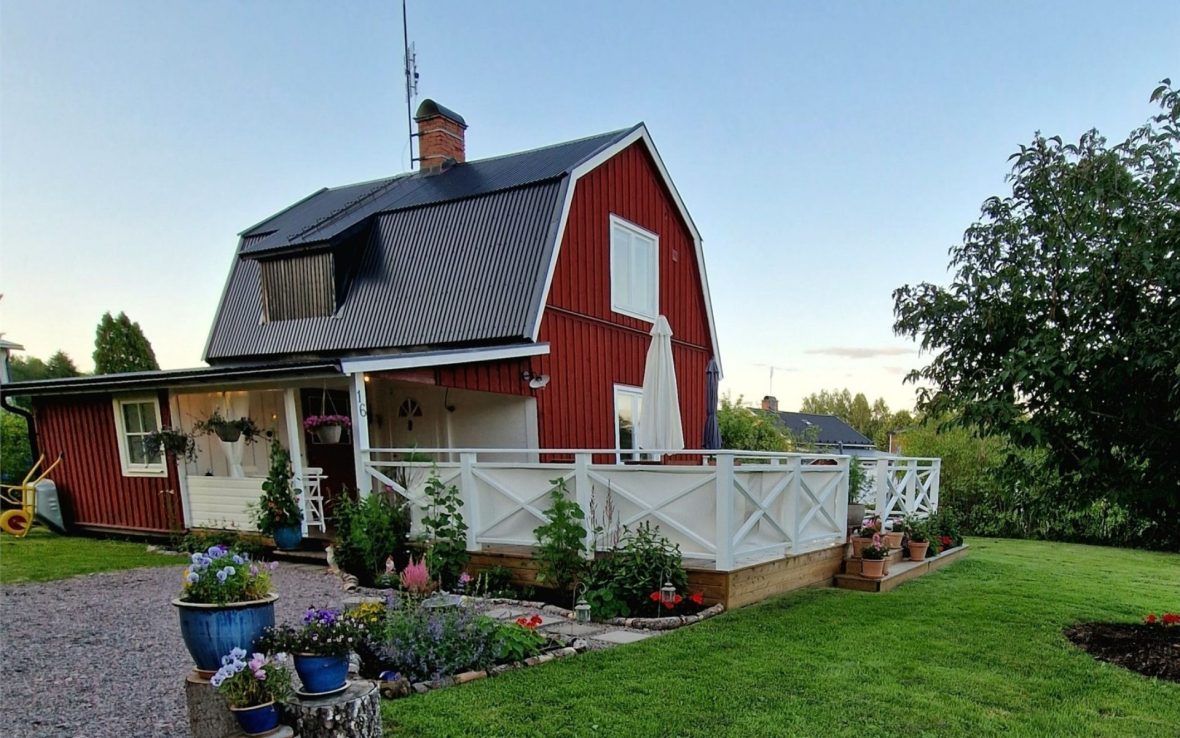
I found this dream house on Cheap Nordic Houses, an Instagram account started by the Gothenburg-based Lela Amparo, an American, and François Pérennès, a Frenchman. The two friends met after they both married Swedes and moved to their partners’ homeland.
As outsiders, they became enthralled by how far you could stretch a housing budget in what seemed like the most idyllic places on Earth. As a long-time follower of their account, I have been, too. Like, you’re telling me that USD$200,000 could buy me a whole island? With a house and a dock and a sauna, and mountain views, for how much? Or, rather, how little? It seems absurd. Surely there’s some fine print?
“There’s so many foreigners like François and I, especially in Gothenburg and Stockholm, that I’m like, ‘Do you think the Swedish tourism board has a deal where the Swedes get cash back if they go marry a foreigner?”
- Lela Amparo, co-founder Cheap Nordic Houses
”People always ask, ‘Why are the houses so cheap?” Pérennès says. “‘Is this real?’ Yeah. Yeah, it’s real. And yes, it’s in (US) dollars. The houses are so cheap because maybe there’s a bit of an exodus (in these towns) towards the city. People want to live in the cities.”
It’s a classic ‘the grass is greener’ type of story. Over time, many small towns have seen their populations dwindle as younger generations flock to bigger urban centers, drawn by the promise of more job opportunities or more cosmopolitan living.
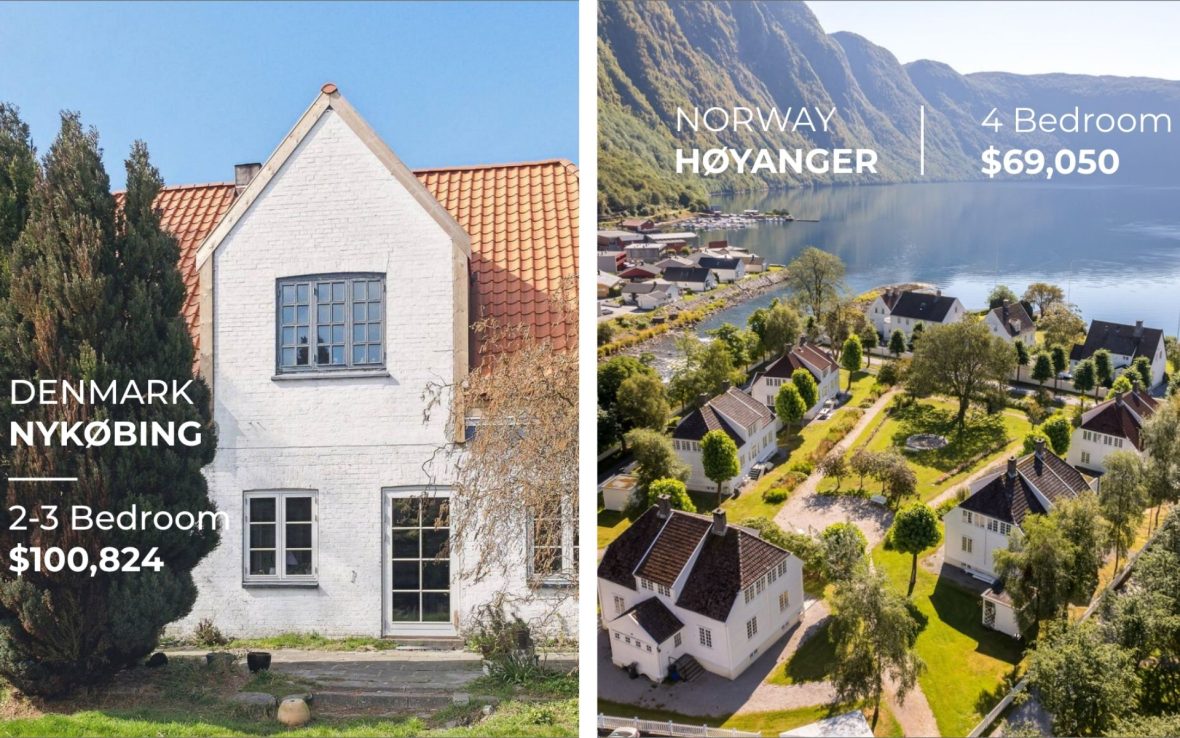
Of course, the opposite is true, too. Not everyone is actually up for country life, but many of us are fascinated by it, much like Pérennès and Amparo. I took two trips to Sweden last summer, inspired partly by Cheap Nordic Houses.
I’ve forwarded dozens of these ‘affordable’ homes to friends and family over the last five years, imploring them to daydream and then Venmo me for their share of a house deposit. So when Roadsurfer, a German campervan company, offered me a chance to take a spontaneous road trip around Europe last June, I started pinning my favorite houses on a Google Maps list. I planned a route from Hamburg to the Skåne region, on the southeastern coast of Sweden. I ended up camping by the beach in Vik, not too far from one of the Cheap Houses I’d pinned.
I didn’t end up getting a viewing, but I did fall in love with the region. I bought fresh apple juice from a local cidery and groceries from an unmanned grocery store. The owners there unlock the doors remotely for customers and trust them to tally up their own purchases honestly. Where else can you find that?
I spent days driving slowly through the forests of central Sweden, taking pictures of classic red houses and camping in forests or by lakes. I then drove to Gothenburg to meet Pérennès for coffee, curious if anyone had successfully bought one of their recommended ‘cheap houses’ and moved to Scandinavia for a new life.
People often ask this, Amparo and Pérennès told me earlier this month. While they’re only aware of a handful of people—perhaps 10—who’ve bought homes they spotted on the account, others have reached out to say it has inspired them to move to Scandinavia.
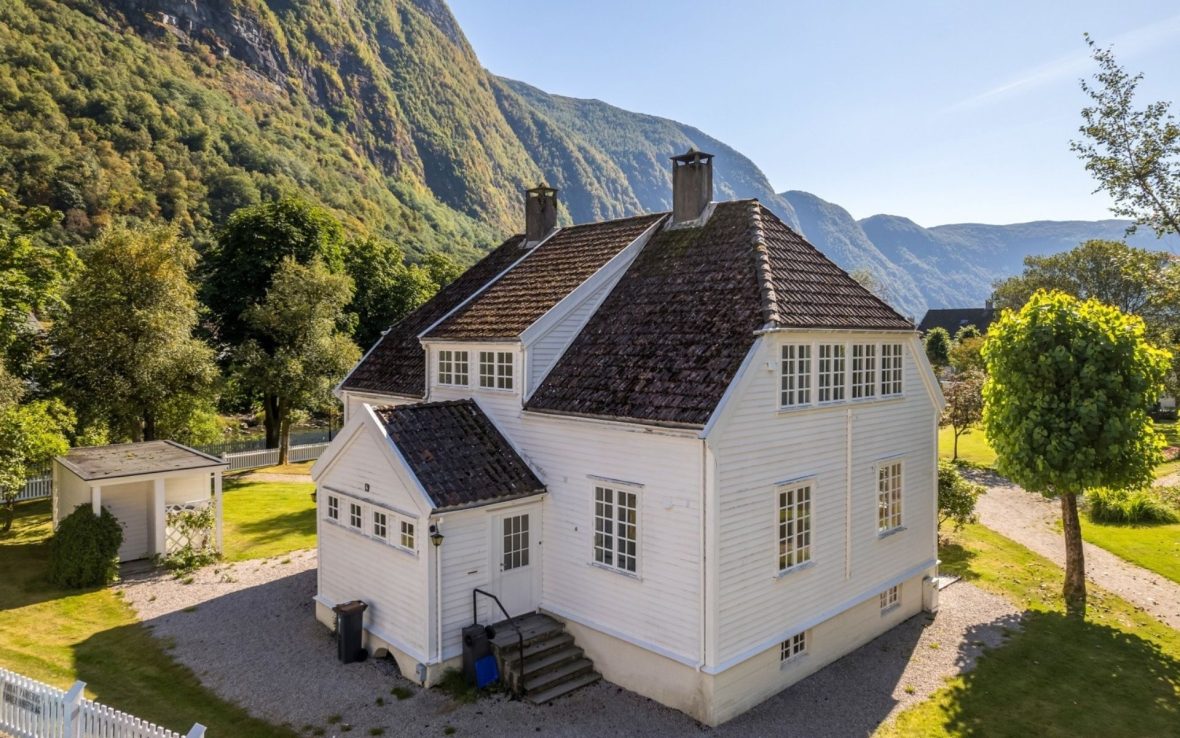
More recently, as the account continues to grow, they’ve received interest from real estate agents and tourism boards who love the account and see potential in its audience. Tourism to Scandinavia is predicted to grow as vacationers seek destinations with cooler climates. The smaller towns and more remote regions want a share of those visitors, too—and some even want to recruit new residents.
The reality is that remote communities like these often aren’t just physically far from big cities, but they can take a whole day to get to because the driving is slow-going, or requires a ferry or a personal boat. Small communities can’t always support services like regular public transportation, either.
“ It’s hard in the beginning (to live in these small villages), but they talk about community and being able to actually go and talk to your neighbors. You can actually go ask them for half a dozen eggs.”
- François Pérennès, co-founder Cheap Nordic Houses
I saw this last August in the Stockholm Archipelago, where a new island-to-island trail hopes to bring more tourists in a way that also benefits full-time residents. More tourists would need more ferries, the logic goes, and having more regular and direct ferries would make life easier for full-timers, too, and make it more attractive for young people to move there.
“There’s so many foreigners like François and I, especially in Gothenburg and Stockholm, that I’m like, ‘Do you think the Swedish tourism board has a deal where the Swedes get cash back if they go marry a foreigner?’” Amparo says. “Because the amount of us who have moved here is insane.”
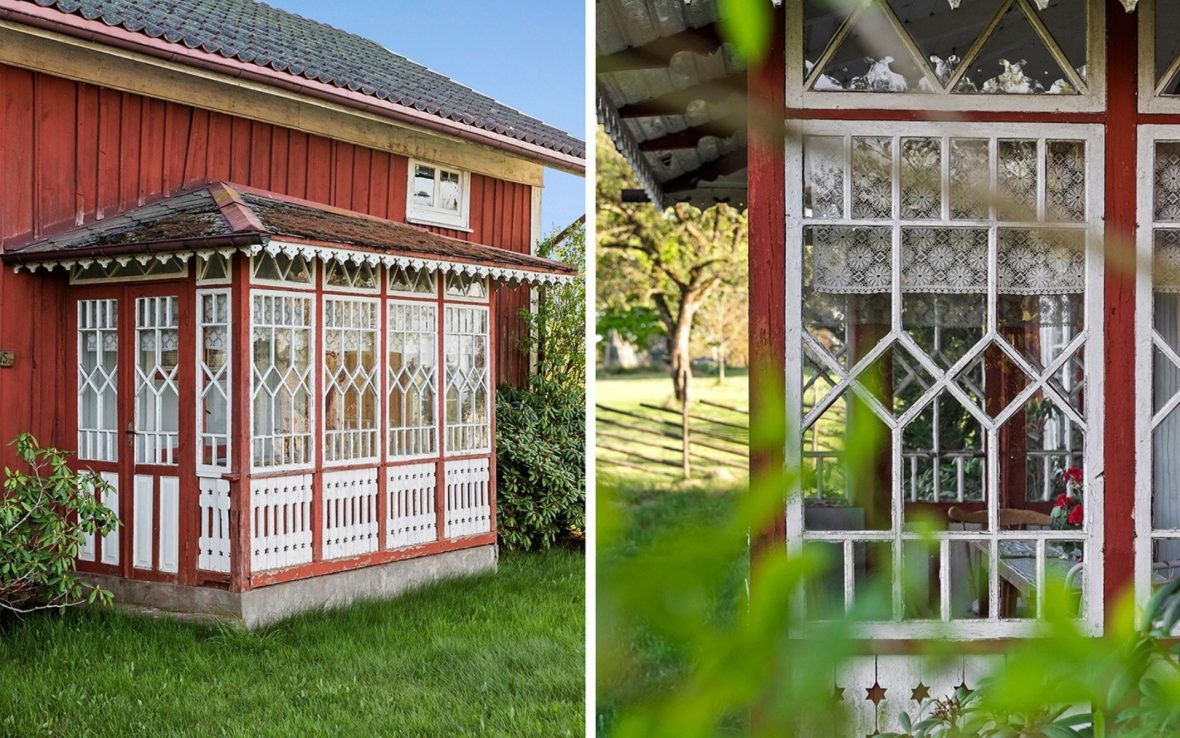
Amparo and Pérennès are now working on a book called Living in the Nordics, which will be published by Thames & Hudson next year. For this coffee table-style project, they’ve been interviewing people who live in the sorts of far-away villages they regularly feature on their grid.
“ It’s hard in the beginning (to live in these small villages), but they talk about community and being able to actually go and talk to your neighbors,” Pérennès says. You can actually go ask them for half a dozen eggs, he adds.
“I would never ask that to my neighbors in the city. But they can. The shop is not nearby. There’s this sense of community that I don’t think you can find in many places.”
My neighborhood in London has a WhatsApp group where people ask for recommendations for window cleaners, request to borrow lawn chairs, and circulate petitions or opinions against new e-bike hangars. But I’ve never heard of anyone asking for half a dozen eggs. When I was locked out of my house and trapped in my garden a couple of years ago, all I could think was “don’t disturb the neighbors!”
When I imagine life in a Cheap Nordic House, I envision a life where I let my neighbors in a lot more than I try to maintain walls for privacy. And to get all that—baked-in community, homemade jam-swapping, and help when you need it—for less than USD$100,000?
I can’t imagine a better bargain.
**
Cheap Nordic Houses publishes real estate listings on their Patreon page before they go up on Instagram. You can sign up for their newsletter here.
The writer was hosted by campervan rental Roadsurfer.
***
Adventure.com strives to be a low-emissions travel publication. We are powered by, but editorially independent of, Intrepid Travel, the world’s largest travel B Corp, who help ensure Adventure.com maintains high standards of sustainability in our work and activities. You can visit our sustainability page or read our Contributor Impact Guidelines for more information.

Kassondra Cloos is a travel journalist from Rhode Island living in London, and Adventure.com's news and gear writer. Her work focuses on slow travel, urban outdoor spaces and human-powered adventure. She has written about kayaking across Scotland, dog sledding in Sweden and road tripping around Mexico. Her latest work appears in The Guardian, Backpacker and Outside, and she is currently section-hiking the 2,795-mile England Coast Path.






Can't find what you're looking for? Try using these tags: